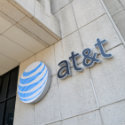March 2, 2015

BARCELONA -- Mobile World Congress 2015 -- AT&T's aspirations for the Internet of Things (IoT) knows no bounds, as Ralph de la Vega, president and CEO of AT&T Mobility and Business Solutions, told a packed audience here that there are revenue opportunities even in garbage.
Speaking during the keynote session on the "Keys to the Connected Lifestyle" this morning, de la Vega said that AT&T Inc. (NYSE: T)'s IoT vision is to connect wearables, cars, homes, cities and enterprises -- and trash cans -- all of which will be controlled by smartphones. (See AT&T Steps Up Its IoT Offensive, Pics: AT&T's Foundry of Things and 10 Weirdly Useful IoT Devices.)
De la Vega said that AT&T recently connected trash cans for a recycling and waste management company that serves large enterprises. Using sensors and 3G printing capabilities, the company is now able to know how much waste is in the cans to determine the right time to empty them. As de la Vega explained, this saves the company time and money from not sending people to empty the trash containers before they're full. (See NYC: Inside the Internet of Bins.)
"I never thought in a million years, I'd look at a trash can and see revenue," said de la Vega. "I see revenue in garbage!"
Want to know more about carriers' IoT plans? Check out our dedicated IoT strategies content channel right here on Light Reading.
The opportunities are "almost limitless," he said, but the challenges for IoT are ensuring security, privacy protection and effortless use for consumers and businesses. (See Will 2015 Bring IoT Resolution for Operators?.)
"Security is our number one priority," he said. "Consumers are getting more concerned about it and we always work on safety and security, trying to anticipate and mitigate [problems] before they can happen."
On the connected cars front, AT&T is working with many different manufacturers, including GM, Audi, Nissan, Ford, Volvo and Tesla. "When we started working with GM, I didn't think there would be this much demand for connected cars," said de la Vega. "Consumers are willing to wait a year [before buying] just to have the capability of the connected car."
— Michelle Donegan, contributing editor, special to Light Reading
About the Author(s)
You May Also Like












